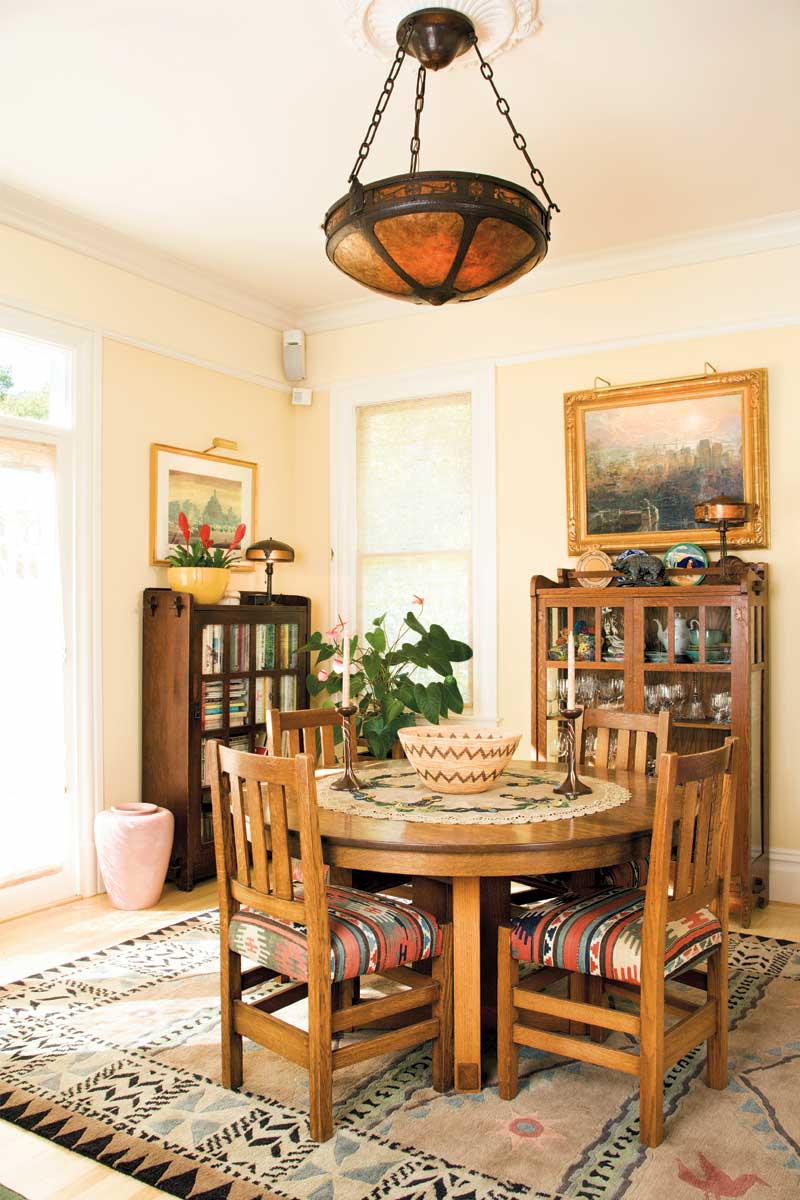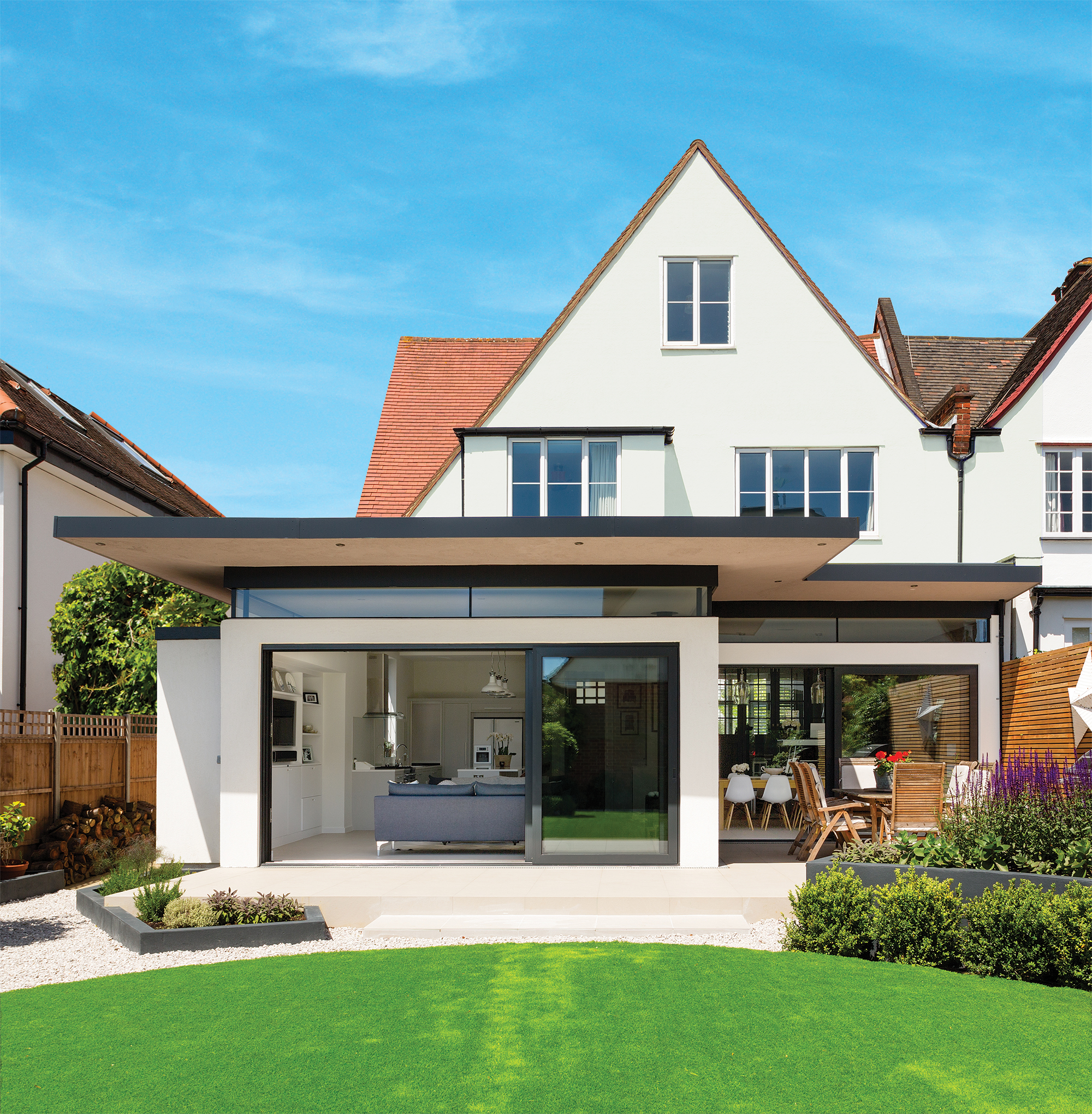Table Of Content

While you can certainly see how Arts and Crafts morphed into the sterile, uncluttered expanses of modernism, you can also see in many popular interior design elements, from furnishings to textiles, the influences of the early movement. Arts and Crafts homes often have prominent porches, sometimes positively enormous ones. If you were to step out of your car directly in front of Frank Lloyd Wright's Boynton House, the porch might not make much of an impression.

Pasadena Showcase House of Design 2024: Step Inside the English Tudor Revival Manse
“The home features low-pitched roofs with long overhangs and expressed rafters, shingle siding, and a stained wood-paneled interior with abundant built-ins,” Grochowski says. Both the American and British Arts and Crafts movement embodied natural materials and were seen as an antidote to the industrial revolution, which caused an uptick in mass-produced furniture. This home style started to debut on the British side in the late 19th century, more specifically 1860s.
Everything You Need To Know About Arts And Crafts Homes
The 1905 Marston House of George Marston in Balboa Park was designed by local architects Irving Gill and William Hebbard. The woods, the low and horizontal room shapes, and the natural light that filters through the art glass exterior windows coexist with a relatively traditional plan, in which most rooms are regularly shaped and organized around a central hall. Although the house is not as spatially adventurous as the contemporary works of Frank Lloyd Wright, or even of the earlier New England "Shingle style," its mood is casual and its symmetries tend to be localized. The Arts and Crafts Movement in American Craftsman style architecture was focused on the use of natural materials, attention to detail, aesthetics, and craftsmanship.
Ten rare Arts & Crafts homes for sale in London now – from Muswell Hill to Maida Vale - Evening Standard
Ten rare Arts & Crafts homes for sale in London now – from Muswell Hill to Maida Vale.
Posted: Fri, 26 Apr 2024 18:37:40 GMT [source]
Arts and Crafts House Styles and Examples
Its plans first appeared in Art and Architecture magazine in May 1949, and the style is Mid-Century Modern. Beyond Shelter helps buyers and sellers of classic Los Angeles homes with tailored real estate services, with the utmost discretion. Experience living in some of Los Angeles’ most coveted neighborhoods across the city and live beyond. This celebrity owned updated Los Feliz Craftsman home is located in the gated luxe enclave of the Oaks.
The History of Arts and Crafts Homes
“We wanted to concentrate on polished nickels and polished chromes to get that silver feel back in,” he says of the fixtures, hardware, and lighting by Kohler and Kallista. Hermogeno and designer Lynette Chin brought in a mix of vintage and new furnishings in the family room, incorporating performance fabrics for durability. “[We made] sure that it was a really usable room, that it didn’t just look nice,” Hermogeno says. For a bedroom off the nursery, Carmine Sabatella wanted to create a jewel-toned escape. “I thought, if somebody’s taking care of the baby, they have a space where they can come and feel like it’s a retreat,” Sabatella says.
Inside, Tudor-style homes feature plaster walls, arched doorways, beamed ceilings, and wood details. Arts and Crafts doesn’t refer to one particular house style, but to an entire architectural movement that initially emerged in Great Britain during the second half of the 19th century. The house is located on a grassy knoll overlooking Pasadena's Arroyo Seco, a broad, seasonally dry river bed. Because of the Gambles’ attraction to the environment, the Greenes designed the house to complement the rustic setting.
Construction Features
It opens to the formal dining room seamlessly, creating an open-plan living environment. Beyond the dining room is an updated kitchen with stainless steel appliances, granite countertops and French doors open to the garden. The beautifully updated kitchen and bath seamlessly merge with vintage details, wood flooring, a decorative stone fireplace and built-in cabinetry to create a space that is modern yet full of charm. The kitchen boasts stainless steel appliances and a separate dining area perfect for morning meals. Architect David Owen Dryden designed and built many Craftsman California bungalows in the North Park district, now a proposed Dryden Historic District.

The thing seems to take up half the house, causing one to suspect it was meant as part of the living space. It was so important that even though the home's previous owners had enclosed it, the current owners spent two months restoring it and shoring it up (via Old House Online). Even if you don’t live in a true Craftsman house, chances are, your living space still has those elements that make this style timeless—everything from the breakfast nook to gorgeous built-in shelves (even if you painted the wood a moody hue). An office space in the Gatehouse is now a soothing spa-inspired lounge designed by Margaret Lalikian.
The exhibition hall has a concrete floor so that after a party that might include artists, writers and musicians, it could easily be cleaned with a bucket of water. The third floor was planned as a billiard room but was used as an attic by the Gamble family. The Gamble family crest, a crane and trailing rose, was integrated in part or whole in many locations around the house. Teak, maple, oak, Port Orford cedar, and mahogany surfaces are placed in sequences to bring out contrasts of color, tone, and grain.
Built in a soft Cotswold stone, this large Grade I listed, privately owned house was built in the early 20th century, hand crafted from wood and stone by local craftsmen. This Grade I listed house was built by Phillip Webb in the late 1890s, who designed it for James Beale, a wealthy London solicitor, and his large family. Webb drew his inspiration from Medieval farm buildings, but created a thoroughly modern house. Built in 1927 for members of the Terry’s chocolate manufacturing family, this house in York was designed by local architect Walter Brierley, who has been described as a Luyens of the North.
As is typical of Wright’s Prairie School homes, the front entrance here is concealed from the street. Instead, it is the front porch, protected by an expansive, cantilevered roof, which is the highlight of the façade. With a broad terrace on the first floor and a covered porch on the second level, the back of the house is oriented towards the distant ocean view. William Morris once famously said England's 13th-century Great Coxwell Barn was "as beautiful as a cathedral" (via Britain Express).

No comments:
Post a Comment